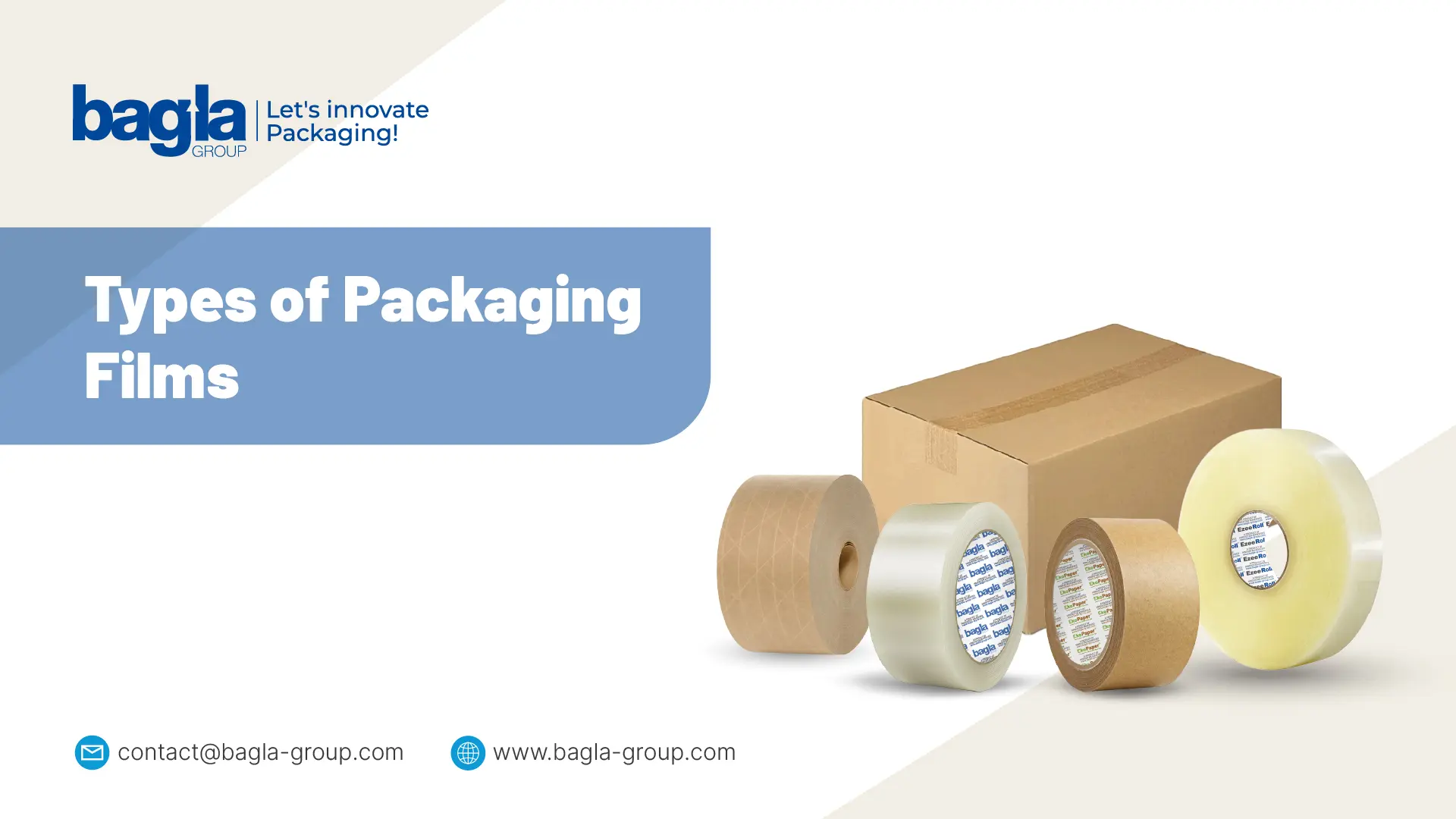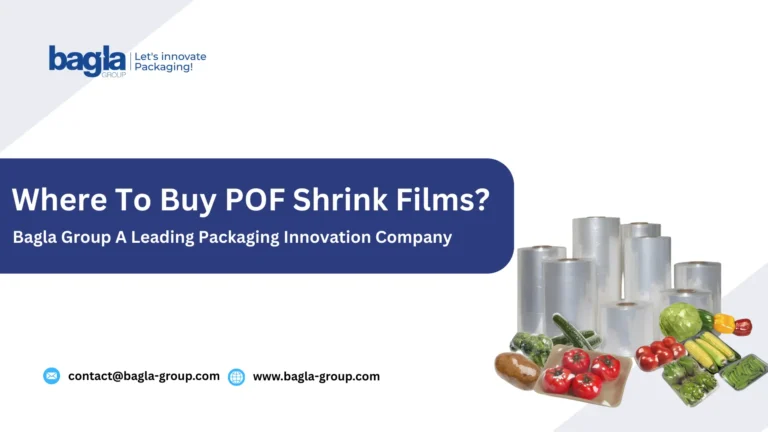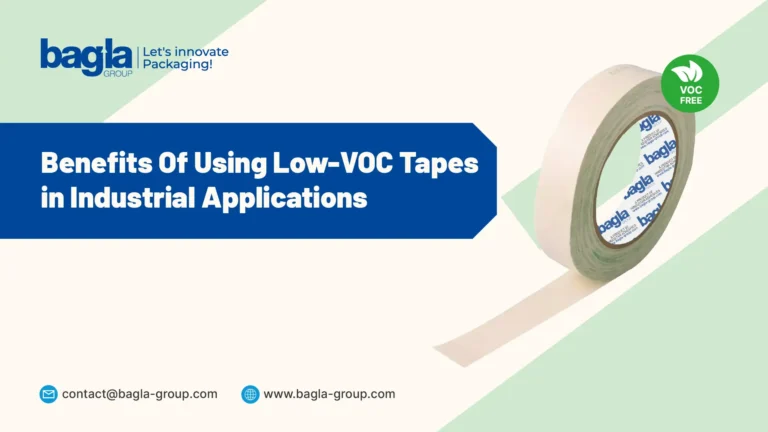If the packaging is the first thing that your customer sees, why not make it perfect by understanding the types of packaging films?
It is necessary because of the ever-evolving world of packaging; the choice of packaging film significantly impacts the product. By using this, you can simply enhance the product’s shelf life, visual appearance, protection, and overall cost-effectiveness. Whether you are a distributor helping clients or a manufacturer packaging your products, you must choose the right packaging solution.
Understand the types of packaging films to make your decision more effective. This blog explores the major categories, applications, properties, and industry insights related to various packaging films.
What Are Packaging Films?
Packaging films are thin plastic or polymer sheets used to wrap or contain products for protection, preservation, display, or distribution. They serve as a barrier to lock in moisture, oxygen, dust, and other environmental factors while also enabling branding and labeling.
List Of Top 8 Types Of Packaging Films
Here in the list below, you will get to know about the list of types of packaging films that are necessary for the packaging industry or product manufacturers. So the top 8 packaging films are as follows:
1. Polyethylene (PE) Films
These types of films offer excellent moisture resistance, Good flexibility, and are cost-effective in the market. It is also known as PE films in the market and is incredibly versatile. Due to its effective cost most widely used plastic film in packaging. These films are available in 3 subtypes in the market:
- Low-Density Polyethylene (LDPE)
- High-Density Polyethylene (HDPE)
- Linear Low-Density Polyethylene (LLDPE)
The LDPE is FDA-approved for food contact and can be used for grocery bags, food wraps, shrink bundling films, and agricultural and construction films.
2. Polypropylene (PP) Films
These packaging films are a reliable solution for heat sealing and high-speed packaging machines. It provides excellent clarity, gloss, and great moisture resistance. Most packers and distributors use these films because of their low cost and high yield. These films are a compatible option for snack packaging, confectionery wraps, garment bags, labels, and tapes. These films are available in 2 subtypes:
- BOPP (Biaxially Oriented Polypropylene)
- CPP (Cast Polypropylene)
3. Polyvinyl Chloride (PVC) Films
For good oxygen barrier protection, you can use these Polyvinyl Chloride (PVC) Films. These are the valuable options for the highest clarity, and shrinkable under heat. These packaging films are available in rigid and flexible variants. Most of the time, these films are a reliable choice for shrink wraps, pharma blister packaging, clamshell containers, meat and cheese wraps.
4. Polyethylene Terephthalate (PET) Films
PET films offer excellent mechanical and thermal properties. These films are suitable for demanding environments and multilayer applications. Buyers can simply experience multiple features in these films, such as high tensile strength, excellent chemical resistance, superior clarity & great dimensional stability. You can simply apply these films on multiple packaging such as microwaveable food trays, beverage bottles (when rigid), high-barrier laminates & labels, and release liners.
5. Polyamide (Nylon) Films
Nylon films are an ideal option for products requiring vacuum sealing or long shelf life under refrigeration or freezing. When you use these films then you will get features such as outstanding puncture and abrasion resistance, high oxygen barrier, freezer-safe, and printable surface. Most of the buyers use these nylon films on vacuum bags, frozen food packaging, meat and cheese pouches, and Cook-in-bag solutions.
6. EVOH (Ethylene Vinyl Alcohol) Films
When you are willing to pair up with the moisture resistance layers, then you must choose EVOH films. These films provide an unbeatable barrier solution for oxygen-sensitive items like meat, dairy, and baby food. EVOH films are used in multilayer co-extrusions.
You can simply use these packaging films for food trays and cups, shelf-stable products, pharmaceutical packaging, and vacuum pouches.
7. Biodegradable and Compostable Films
These are the eco-friendly and sustainable options for the buyers. Films are derived from renewable resources and are industrially compostable. Biodegradable and Compostable Films are in demand in the market due to increasing environmental concerns and regulations. This one is the sustainable choice for packaging of organic food packaging, disposable cutlery wraps, single-use bags and films & sustainable retail packaging.
8. Multi-Layer Laminated Films
This multi-layer film is a combination of two or more different films. It creates a structure with enhanced strength, barrier properties, and sealability. It contains popular layer combinations such as PET/PE, BOPP/CPP & Nylon/EVOH/PE. The barrier control features make them ideal for premium products. The user can simply apply these films:
- Retort pouches
- Stand-up zipper pouches
- Vacuum-sealed packaging
- High-barrier snacks and ready-to-eat meals
How to Choose the Right Packaging Film?
When you are searching to choose the right packaging films, then you have two options: you can simply check the features mentioned below.
OR
You can connect with the expert team of Bagla Group packaging solution provider, who will provide you with proper guidance to choose the right as for your products.
- Product Type – Check the type of the product first because for different items, different films are required, such as:
- Perishable? – EVOH or Nylon
- Heavy or sharp-edged? – Nylon or multilayer
- Fragile or lightweight? – LDPE or BOPP
- Environmental Conditions – You must check which film is best as per the environmental conditions.
- Freezer storage? – Nylon
- Heat-sealing? – CPP or PET
- High humidity? – Avoid moisture-sensitive films like EVOH unless layered
- Visual Appeal – If you are looking for films that look glossy and transparent, then you must opt for the following:
- Need transparency? – BOPP or PET
- Glossy finish? – BOPP
- Matte texture? – Specialty PE or laminates
- Sustainability Requirements – For those who are looking for a sustainable option, they must choose:
- Looking to reduce plastic waste? → PLA or cellulose-based films
- Recyclability needed? → Mono-material PE or PP films
Packaging Films by Application Category
| Application | Best Film Options |
| Snacks | BOPP/CPP, PET/PE Laminates |
| Frozen Foods | Nylon/PE, PET/EVOH/PE |
| Pharma Blisters | PVC/PVDC, Aclar Laminates |
| Ready-to-eat Meals | Retort Laminates (PET/Alu/CPP) |
| Bakery & Confectionery | BOPP, PE, Compostable PLA |
| Industrial Packaging | HDPE, Shrink LDPE, BOPP Tapes |
Conclusion – Types Of Packaging Films
Choosing the right types of packaging films is more than a technical decision. It is a strategic decision that affects your product’s safety, branding, sustainability, and consumer appeal.
If you’re a packaging distributor, being knowledgeable about these film types can help you guide your clients better. If you’re a product manufacturer or user, this guide helps you make informed choices that align with your goals.
As the demand for efficiency, safety, and eco-friendliness grows, so does the importance of staying updated with the latest in packaging film technology.
What Is The Most Used Packaging Film In the Food Industry?
BOPP and PET-based laminates are widely used due to clarity, cost-efficiency, and barrier properties.
Are All Packaging Films Recyclable?
No. Only mono-material films (like PE-only or PP-only) are easier to recycle. Laminates are harder unless designed for recyclability.
Which Film Is Best For Vacuum Packaging?
Nylon/PE or Nylon/EVOH/PE multilayer films are commonly used for vacuum sealing.
Is Biodegradable Packaging Film Safe For Food?
Yes, most compostable films like PLA are food-safe and certified for direct contact.
How Can I Test Which Film Suits My Product?
Consult with your supplier for sample trials or barrier analysis. Testing based on shelf life, sealing performance, and storage is essential.



